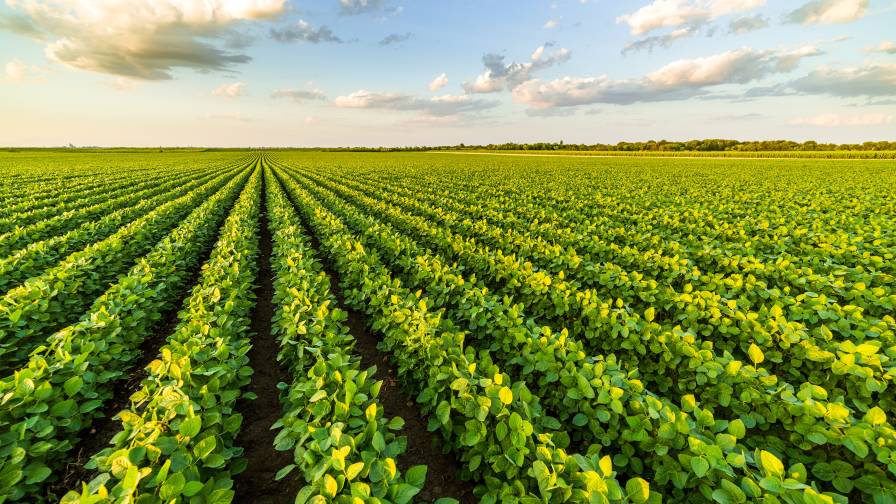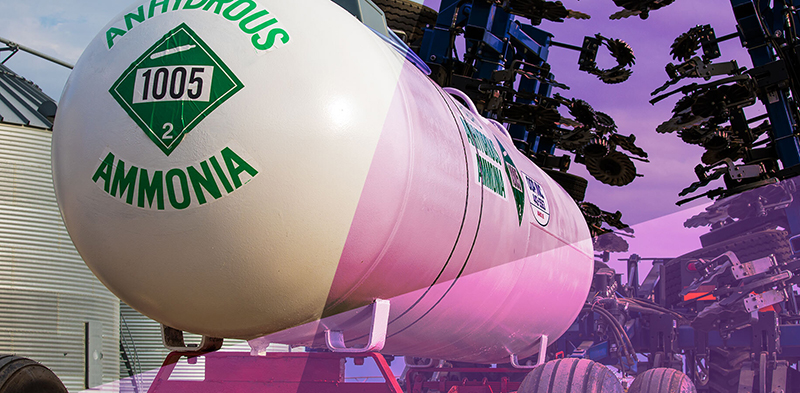The Hidden Danger of Historic U.S. Herbicide Shortages
A thirty-percent shortage, give or take, of two of the country’s most heavily used herbicides — glyphosate and glufosinate — is the supply situation U.S. growers and retailers face in 2022, according to some agronomists and industry insiders with whom we spoke for this article.
“I’ve been in the business since 1977, either working in retail or with Syngenta. I’ve never seen a time when chemicals were short. This is historic,” Phil Krieg, Agronomy Service Representative at Syngenta, says.
Ironically, it’s a tunnel-vision focus on the shortages that most worries Dr. Josie Hugie, Branded Technologies Data Manager with Wilbur-Ellis.
She calls attention to the danger in the “hungry hippo approach.”
“Inadvertently placing resistance management in the back seat is probably the greatest risk we run, because we’re so focused on whatever we can get our hands on that we are probably not going to be thinking of resistance management in the way that we need to,” she told CropLife® in early November from California, where she is also an agricultural pest control adviser.
Turning to older chemistries to fill the gap won’t always work as regulators cancel their registrations in increasing numbers. For example, numerous recent voluntary cancellations of atrazine and simazine products further tighten options for growers’ weed control programs.
In Ohio, Dr. Mark Loux, Professor of Weed Science at The Ohio State University (OSU), has observed that sky-high glyphosate prices are causing many growers to opt out of or look for alternatives in their fall application.
“They want to save their glyphosate for the spring,” he says, adding that many growers are buying shuttles of glyphosate now instead of the more typical time in the spring, on the expectation that prices could spike even higher.
“You can swap in gramoxone or glufosinate for burndown, but you’ve got to do it the right way and it’s a little bit more challenging (than glyphosate,)” Loux tells CropLife. “Depending on how short things get, we could have a challenging burndown, and I assume a challenging post season for the same reason.”
It’s no time to skimp on foundational products that can help extend the life of a residual (one example being Efficax from Wilbur-Ellis,) nor is it a time to skimp on adjuvants to get the best activity out of the products being applied, Hugie urges.
Making the most out of what you do have will be critical, agronomists say.
Nick Fassler, BASF Director of Technical Services, cautions against drastic measures, and advises timing crop protection applications appropriately to set yourself up for success.
“Group 15s have adequate supplies in the market and can help extend applications, so hopefully you don’t have to come back in-crop,” he says. “If we can limit rescue treatments, there’s going to be more product as a whole to go around.”
For burndown solutions, he suggests substituting 2,4-D with a product like BASF’s Sharpen, or atrazine applied with oil.
With the rapid expansion of the LibertyLink trait, now eclipsing 70% of the soybean market, and the corresponding additional pressure on LibertyLink herbicide, he argues for the need of a premium, strong residual to limit the number and height of weeds at the time of application. For post, he advocates a Group 15 such as BASF’s Zidua or Outlook on soybeans.
“That’s what’s buying you time between those applications. It’s the only way to get enough residual weed control until you canopy — that’s really going to be the race this year,” he adds.
Fassler, who grew up on a corn and soybean farm in Illinois, advises considering all cultural, chemical, and practical solutions to minimize weed pressure: “Look at the levers you have, talk to your agronomist, talk to your retailer, and pull those solutions together so you can be successful … We don’t want to create a situation in 2022 that we have to live with forever.”
Silver Lining
“It’s a good time to have really open, humble conversations with growers — to say, ‘What are you open to? We’ve had these programs forever; these are the things that aren’t available, and here are some ideas I had — let’s talk,’” Wilbur-Ellis’ Hugie advises.
The extra reliance growers and retailers will likely have on their agronomists and advisers in the upcoming season is where you’ll find the silver lining in the situation, she points out.
“It might actually open up discussions on change with anybody that’s not comfortable with change,” she predicts. “It’s going to drive them to be comfortable with trying something new.”
Krieg echoes Hugie’s fears about the unintended loss of weed control and overlooked resistance management. Syngenta has “gone to extraordinary practices” to ensure products are pushed out from its production plants, Syngenta’s Krieg says, and he and his colleagues have been sitting down with retail partners to forecast their needs as accurately as possible for next year and getting orders in much earlier than normal.
“We’re running as hard as we can, sourcing active ingredients and formularies real aggressively,” he assures. “We hope we can stay on track, because growers are going to have to set themselves up with good overlapping, residual programs and reduce dependency on glyphosate and glufosinate, because we’re not going to have the capability to do Hail Mary passes.”
His take-home message: Plan early. Do not under-plan on the assumption that all will work itself out in the end.
“Plan early, use robust residuals at a proper rate, and realize that in ’22 the easiest weed to control will be the weed we don’t allow to emerge,” he stresses.
Mark Wayland, Senior Brand Manager with Helena Products Group, warns supply will be “touch and go” on several of its auxin chemistries. However, he remains optimistic about the company’s ability to supply its customers thanks to foresight and early production efforts.
“There is a lot of uncertainty with not only supply, but pricing and wanting to lock down some of their (herbicide) orders, as many people expect prices to continue to increase,” Wayland shares with CropLife. “Folks are putting in their forecasts and orders much earlier than we typically see. It’s a good thing we’re out this far ahead of the ’22 season, because it gets on you in a hurry.”
Solid Control
Supply crunch aside, 2021 marked a second year of solid weed control, OSU’s Loux says, aided by wholesale adoption of LibertyLink (BASF), Enlist (Corteva Agriscience), and Xtend (Bayer) platforms. Weed-free fields typically comprise around 50% of end-of-season weed surveys covering the state of Ohio, and that jumped to 75% last year coming into this year, he says.
Waterhemp is spreading at a faster rate than Ohio’s other two major weeds, ragweed and marestail. But the big change in the past year was the switch over to the Enlist platform, he says. He estimates the increase in adoption of Enlist in the state at 20% to 30% over last year, on improved seed availability and genetics as well as the desire on the part of growers and retailers to avoid dicamba and its associated drift issues.
“We are in a period right now where it’s a little bit like the late ’90s. If you can’t control weeds right now, you probably shouldn’t be in business,” Loux jokes.
Even with formidable platforms like Enlist and Xtend being used, cutting corners or having the wrong program in place will override them, Loux says. While these platforms currently offer robust control in most regions, “it’s only a matter of time before things slowly start to go the other way. We are putting tremendous pressure on three herbicides, which is why we preach walking fields and taking out waterhemp at the end of the season to keep it from going to seed.”
In certain regions in Tennessee, lacking pigweed control on fields over consecutive years is reason enough for many to switch from Xtend, writes Larry Steckel, Extension Weed Specialist at the University of Tennessee.
“Judging from personal visits the level of infestation can range from scattered escapes across a field to a few fields pretty much covered up from stem to stern,” according to Steckel’s October 6 blog. “Overlaying residual herbicides is a must in fields that have a lot of resistant Palmer amaranth pressure,” in addition to making an effective post option.
Krieg believes dicamba applications on soybeans will become very regionalized, with heavier use in parts of the country that can afford more relaxed controls.
“I think whether it’s Enlist or dicamba acres, growers are going to be looking for the newer genetics in both of those platforms, just because of the increased yield that they should be able to realize,” he says.
New Products
From Helena, Sinister Intent will launch in 2022. It is a flexible preplant, preemergence, and early post herbicide for soybeans and post-directed for cotton containing two AIs: S-metolachlor and fomesafen. A third component, Moveo Formulation Technology, enhances absorption and uptake, allowing for more efficient weed control and improved compatibility.
The company also looks for a second successful year on the market for another soybean herbicide, Antares Complete, the fourth product in its Antares sulfentrazone-based line that first rolled out in 2016. Antares Complete delivers three modes of action, adding S-metolachlor and metribuzin to sulfentrazone.
From Corteva, Resicore XL will launch in ’22 and features three AIs/modes of action – acetochlor, mesotrione, and clopyralid. According to Corteva, it is a preplant, pre-, and postemergence corn herbicide that will offer increased crop safety and application flexibility on corn greater than 11 inches tall.
Syngenta brought Acuron GT corn herbicide to the market in 2021, and it looks to continue momentum with the post-emergence-plus residual corn herbicide next season. The product is powered by bicyclopyrone in addition to glyphosate, mesotrione, and S-metolachlor.






